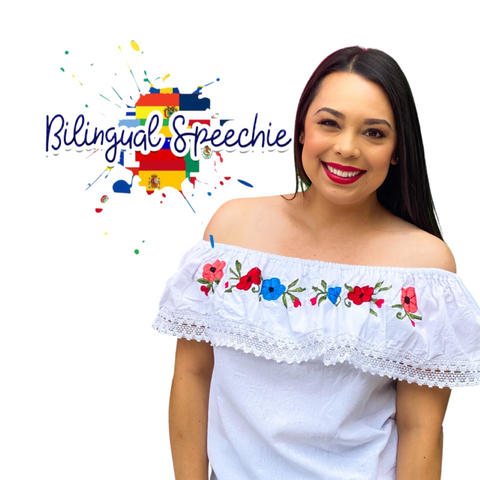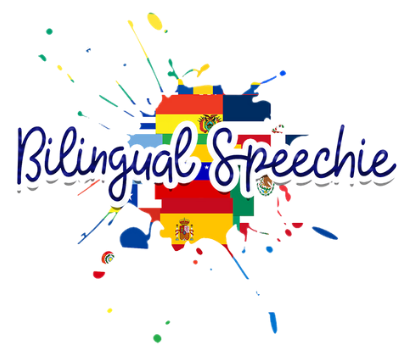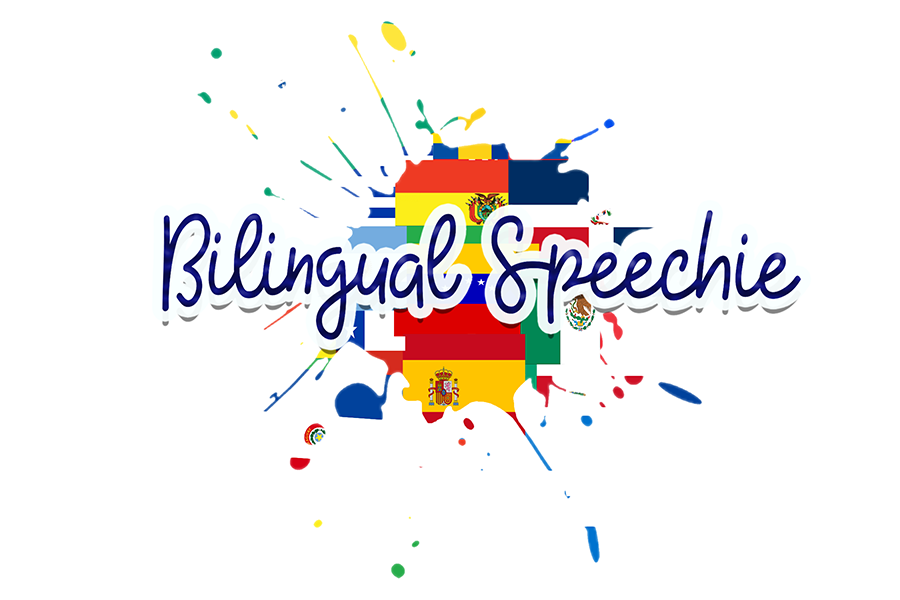by Liliana Diaz November 29, 2020 1 Comment
Are you trying to raise your child to be bilingual? Are you looking for the best way to expose your child to your home language? Are you uncertain of where to start? Well then keep reading because you are in the right spot!
Before I can discuss some tips on how to raise a bilingual child, we first need to discuss your plan and goals. What are your bilingual goals for your child and your family? The best way to start is by discussing your goals with your family and establishing a plan that will be the easiest for you and will allow you to be consistent. The last thing you would want to do is establish goals that are unrealistic or push yourself out of your comfort zone. Your goals should always include being able to provide rich language models in all environments, therefore, if you are not fluent in a language or feel uncomfortable speaking the language, you should not force yourself to speak that language to your child.
Here are some questions to ask yourself and/or your family in order to help you establish bilingual goals for your child:
How fluent do you want your child to be in the minority language/majority language?
Bilingualism exists on a continuum meaning that a person’s fluency is always fluctuating depending on time, context and/or setting. Personally, I don’t believe balanced bilinguals is a thing (a person that has equal proficiency in both languages) because a person’s proficiency of a particular language can vary based on the amount of usage and exposure from day to day. Consider whether you want your child to have an equal amount of exposure and usage of both languages.
When discussing bilingualism, there are two ways that a person can be bilingual – expressive bilingual and receptive bilingual. An expressive bilingual is a person that can speak both languages and a receptive bilingual is someone who only understands the language but doesn’t speak it. Do you want your child to be expressive/receptive bilingual or just a receptive bilingual (comprehend the language only)?
Do you want your child to be a simultaneous bilingual or a sequential bilingual?
A simultaneous bilingual is someone who acquired both languages at the same time. A sequential bilingual is someone who acquired one language first and then the second language at another point in time. One is not better than the other. There are many people who are simultaneous and/or sequential bilinguals and are perfectly fluent in both languages. Do you only want to focus on the minority language at home and then later provide your child the opportunity to learn the majority language once he/she enters school? Do you want your child to learn both languages at the time?
Do you want your child to be able to read, speak and write in the minority/majority language?
When discussing language learning and/or language skills, it can be divided into two categories: Basic Interpersonal Communication Skills (BICS) and Cognitive Academic Language Proficiency. Per the Ohio University website, “Basic Interpersonal Communication Skills (BICS) are the language skills needed in social situations. It is the day-to-day language needed to interact socially with other people. English language learners (ELLs) employ BIC skills when they are in social situations such as the cafeteria, at parties, playing sports and talking on the telephone. Social interactions are usually context embedded. That is, they occur in a meaningful social context. They are not very demanding cognitively. These language skills usually develop within 6 months to 2 years. Cognitive Academic Language Proficiency (CALP) refers to formal academic learning. This includes listening, speaking, reading, and writing about subject area content material. This level of language learning is essential for students to succeed in school. Students need time and support to become proficient in academic areas. This usually takes from five to seven years.” Keeping this in mind, do you want your child to be able to use the language to have social conversations only (BICS)? Is it important for you that your child be able to read, write and speak the other language and develop CALP?
Assuming that you want your child to be able to speak, read and write the minority language, are you going to consider enrolling your child in a special bilingual program to achieve this? How else can you achieve this?
You can read all about the benefits of bilingual programs and the different types of bilingual programs that exist here.
Is your family in agreement with your goals and how will you combat negative comments towards your decisions?
There are many myths associated with bilingualism and when it comes to parenting, you will receive countless suggestions and tips from other parents, friends or family members. Are you ready to deal with the negative myths that exist about bilingualism? Make sure you are well informed about the benefits of bilingualism, typical language acquisition in bilingual children, and the common myths associated with bilingualism. This will help ensure that you can shut down any negative comments about raising your child to become bilingual and provide facts that are heavily supported by research on bilingualism. The last thing you would want to do is doubt yourself and your end goals.
This parenting strategy works great if one parent is fluent in one language and the other parent is fluent in another (Example: Parent 1 is fluent is Spanish & Parent 2 is fluent in Polish). With the One Parent, One Language Method, one of the child’s parents speaks one language and the other speaks a different language to the child. It is important to keep in mind that with this bilingual parenting method, parents don’t have to speak exclusively in their “assigned” language. Once again, do what is more natural for you and your family. The last thing you would want to do is force your child to only speak the language that is assigned to the parent. Communication should not be forced nor ignored if it is not in the target language.
Pro: If both parents are completely fluent in their native language, the child will receive rich language modeling from both parents
Con: If the child spends more time with one particular parent, the child might not receive enough exposure in the second language.
This bilingual parenting method works great if both parents are fluent in the same language. In this parenting method, both parents or caregivers only speak the minority language at home and in other environments. This ensures that the child receives ultimate exposure in the minority language at all times. A common concern that parents have with this parenting method is that the child will not speak the majority language once he/she enters school. However, one thing to keep in mind is that children are able to adapt to their new environment and easily learn new concepts. Learning the majority language at a later time will not have any harm on your child and he/she will be able to be successful in school.
Pro: The child will receive a lot of exposure in his/her native language which builds for more opportunities to increase your child’s expressive and receptive vocabulary skills. The family also doesn’t have to worry about switching languages or providing enough exposure.
Con: Your child may not know or speak the majority language when entering school and often this may cause parents to worry.
This bilingual parenting method is great if your child has grandparents or other caregivers that speak another language. Perhaps your child is only required to speak the minority language when he/she visits grandma or when he/she is in daycare. In this parenting method, the use of each language depends on the context, situation, or environment that your child is in.
Pro: Your child will easily be able to code-switch amongst his/her environment and with his/her communication partners.
Con: This parenting method might not provide as much consistent exposure to a language and may also cause for stronger language preferences (more dominant in one language when compared to the other).
This parenting method works great if both parents are bilingual and feel more comfortable speaking in both languages at home. With this parenting method, parents might switch their language depending on the conversation, topic, context, setting, time, place or person they are talking to. Often times, parents who have grown up as bilingual are more comfortable using this method because it is more natural for them to communicate like this. Some parents might also find that they code-mix a lot more at home which is totally normal.
Pro: This parenting method is more laid back and allows for more natural communication experiences. Your child will learn and be able to code-mix which is a natural process for bilingual people.
Con: Your child might not develop enough proficiency in both languages. Your child may also develop a language preference and become more dominant in the majority language if not enough exposure is provided in the minority language.
As mentioned above, it’s hard to follow a parenting method exactly by the book but try to be as consistent as possible in order to ensure enough exposure in the target language(s). Keep your interactions natural, do what is easy for you and your family, make it fun and keep it consistent. Read, play and incorporate language in your everyday routines. Reading is a great way to establish biliteracy. Playing ensures that your child is truly having fun and not creating forced interactions during language learning. Incorporating language in your everyday routines such as “bath time, laundry time, dressing time, outdoor trips, grocery trips, etc.” will help maintain consistency and build vocabulary from a variety of settings.
Please share below in the comments which bilingual parenting method has been most successful for you and why. I would love to hear about all of your different bilingual parenting experiences.
January 28, 2021
Hi! I was always told by an SLP friend that code mixing “give me el agua” for example is not a good way to model language for a child. That if you are going to say a sentence for example u say that sentence in English completely and the next Spanish. But no code mixing because it causes confusion. Do u agree with this? Thanks for your help!
Comments will be approved before showing up.
by Liliana Diaz September 26, 2025
When parents hear the word “stuttering,” it can bring up worry or fear about their child’s future. For many years, stuttering was viewed only as a “problem to fix.” But today, new research and approaches help us see stuttering in a different, more affirming way—one that celebrates communication in all its forms and embraces verbal diversity.
by Liliana Diaz September 26, 2025
As parents, it’s natural to notice how your child talks and to wonder whether their speech is developing as expected. If your child is hard to understand or struggles to say certain sounds, you may have heard the term “speech sound disorder.” But what does that mean? Let’s break it down together.
by Liliana Diaz September 26, 2025
As parents, we celebrate every new word, every little sound, and every funny phrase our children come up with. But sometimes, you may find yourself wondering: “Should my child be talking more by now?” or “Is this a sign of a speech delay?”

Who are we?
Bilingual Speechie LLC. is a small business dedicated to providing inclusive and engaging speech therapy resources and activities for bilingual children, parents, SLPs and educators.
Bilingual Speechie LLC promotes bilingualism and multilingualism by dispelling common myths, providing education on bilingual language development, and promoting heritage language maintenance amongst bilingual families.
About the Owner:
Liliana Diaz-Vazquez is a certified licensed bilingual speech language pathologist (SLP), currently practicing in Chicago, Illinois. She obtained her bachelor’s degree in communication disorders (2012) and her master’s degree in speech language pathology at Saint Xavier University (2014). She is a certified member of the American Speech-Language and Hearing Association (ASHA) since 2014, a member of the Illinois Speech and Hearing Association (ISHA) since 2014 and maintains licensure in the state of Illinois.
Liliana is a first-generation Mexican-American Latina, a small business owner, a full-time school-based SLP, & a bilingual parent, who takes pride in her roots, culture, & heritage language. She loves being able to share her experience as a Latina SLP, and a bilingual mom, as well as her culture & heritage language with the educator, SLP, and parent community.
Liliana Diaz-Vazquez has extensive experience working with the bilingual English and Spanish speaking population & multilingual population. She specializes in augmentative/alternative communication (AAC), bilingual language development and language delays/disorders in bilingual/multilingual children. She has also worked in the early intervention setting for several years where she gained vast experience working with interpreters and bilingual/multilingual families.
Liliana began creating digital bilingual resources and activities in 2014 out of need while working full-time in the school setting as a SLP. Liliana worked with many Spanish-speaking families and quickly realized that there were limited Spanish and bilingual speech therapy resources available for her students and their families. In addition, Liliana quickly became aware that there was a need for education about bilingualism and typical bilingual language development as many of the families she worked with had encountered misinformation about bilingualism. Liliana began developing resources and eventually started Bilingual Speechie LLC with the mission to provide education to SLPs and families about bilingualism, as well as provide inclusive and diverse materials for speech therapy in order to help bilingual families and SLPs gain access to appropriate bilingual materials for children with communication disorders.
Today Liliana currently works full-time in the Chicago public school setting as a lead bilingual SLP where she consults and collaborates with SLPs daily to help them understand how to assess and provide culturally and linguistically appropriate services for bilingual and/or multilingual students. She also runs her small business, Bilingual Speechie LLC, and is on a mission to expand and grow her business so that all SLPs, educators, and families can have access to inclusive, diverse, and bilingual resources in a variety of languages for speech therapy.
Professional Development:
Liliana has vast experience as a speaker/presenter and has presented at several conferences over the years. You can view all previous conferences and topics that Liliana has presented on here. Liliana is available to present on topics such as best practices when working with multilingual populations, bilingual speech/language assessment and treatment, goal writing with multilingual populations and much more. If you are interested in booking Liliana for a conference or event please don't hesitate to send an email at lilianadiaz@bilingualspeechie.com
 English
en
English
en
 English
en
English
en
 Español
es
Español
es


Liliana Diaz
Author